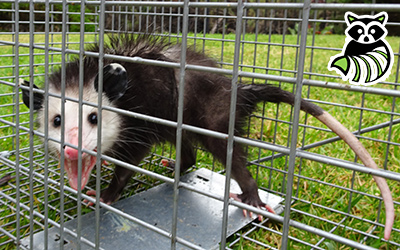
Wildlife control is specialty work, and every job is different. There's no one-price-fits all option. To get a free price quote over the phone for your wildlife situation,
call us at 315-223-8145 and describe your animal issue, and we can give you a phone estimate. Factors that can affect price include:
- Type of animal and number of animals
- Location of animals (yard, or in attic?)
- Number of trap setups we will need to use
- Amount of animal damage repairs needed
- Size of house, extent of inspection needed
- Potential dangerous roof or animal factors
- Do you need animal waste and odor cleanup?
- Driving distance to your property
 We specialize in bat colony extraction, removing 100% of the bats without harming a single one. Despite the work being complex, it is a field of expertise for our technicians. Bats can squeeze through very small holes and gaps and usually enter via the most difficult to reach upper peaks of your roof. Most bats in the US are protected by law. Therefore, doing a bat job correctly and legally requires a live exclusion of the bats. Every last entry gap and hole must be found and sealed, while leaving some primary exit points open with the proper exclusion netting or devices appropriate to the architecture. The bats exit the house at night, through one-way devices, and cannot get back in. Attic cleaning is often recommended in the case of bat infestation. Bats like to live in a hot, dry place which is high enough off the ground to allow for flight clearance, and be safe from predators. They leave their droppings, known as guano, behind and since they stay in the same roost for years, thus letting their waste accumulate. There are many considerations we take during bat exclusion such as: The bat species in order to know the techniques that will be most effective, the architecture around the entry/exit hole so as to determine the devices used, size of the colony, number of entry points, the weather, and time of the year- no exclusions can be made during maternity season when the colony is full of flightless baby bats.
We specialize in bat colony extraction, removing 100% of the bats without harming a single one. Despite the work being complex, it is a field of expertise for our technicians. Bats can squeeze through very small holes and gaps and usually enter via the most difficult to reach upper peaks of your roof. Most bats in the US are protected by law. Therefore, doing a bat job correctly and legally requires a live exclusion of the bats. Every last entry gap and hole must be found and sealed, while leaving some primary exit points open with the proper exclusion netting or devices appropriate to the architecture. The bats exit the house at night, through one-way devices, and cannot get back in. Attic cleaning is often recommended in the case of bat infestation. Bats like to live in a hot, dry place which is high enough off the ground to allow for flight clearance, and be safe from predators. They leave their droppings, known as guano, behind and since they stay in the same roost for years, thus letting their waste accumulate. There are many considerations we take during bat exclusion such as: The bat species in order to know the techniques that will be most effective, the architecture around the entry/exit hole so as to determine the devices used, size of the colony, number of entry points, the weather, and time of the year- no exclusions can be made during maternity season when the colony is full of flightless baby bats.